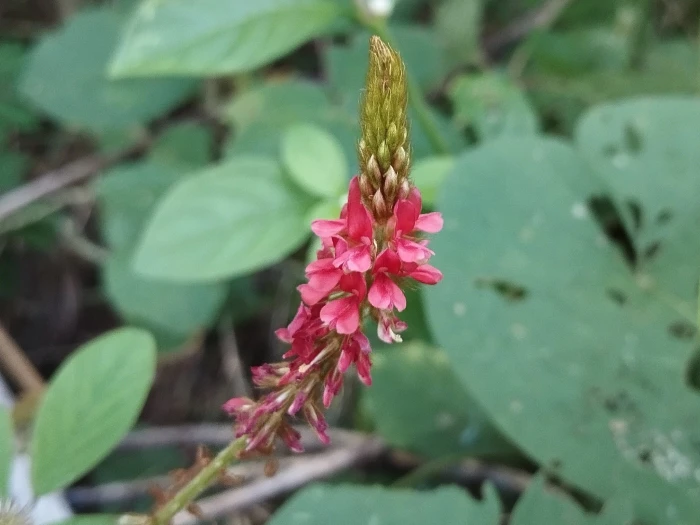Hairy Indigo
(Indigofera hirsuta)
Hairy Indigo (Indigofera hirsuta)
/
/

Pablo Cauã da Silva Toledo
CC BY 4.0
Image By:
Pablo Cauã da Silva Toledo
Recorded By:
Copyright:
CC BY 4.0
Copyright Notice:
Photo by: Pablo Cauã da Silva Toledo | License Type: CC BY 4.0 | License URL: http://creativecommons.org/licenses/by/4.0/ | Rights Holder: Pablo Cauã da Silva Toledo | Publisher: iNaturalist | Date Created: 2024-04-07T20:26:39Z |

























Estimated Native Range
Climate Requirements for Celina, Texas
| This Plant | Your Site | Plant Suitability for Your Location | ||
|---|---|---|---|---|
| • Precipitation | 5" - 193" | 39" | Aquatic | Aquatic |
| • High Temp. | 65°F - 108°F | 95°F | Your summer temperatures are normal for this plant. | Excellent |
| • Low Temp. | 18°F - 75°F | 32°F | Your winter temperatures are normal for this plant | Excellent |
This plant should grow very well at your location without additional irrigation.
Summary
Indigofera hirsuta, commonly known as Hairy Indigo, is a perennial herb that is native to tropical regions but primarily originates from Africa, Australia, and the Indian Subcontinent. It typically grows in open woodlands, grasslands, and disturbed areas, often thriving in poor soils. This species can reach up to 2 meters in height and is characterized by its hairy stems and pinnate leaves with numerous small leaflets. The flowers are pink to purple, arranged in elongated clusters, and bloom during the warm season, adding a splash of color to the landscape.
Hairy Indigo is valued for its nitrogen-fixing ability, which can improve soil fertility, making it a beneficial plant for restoration projects and sustainable agriculture. It is also used as a green manure crop and forage plant in some regions. In cultivation, it prefers full sun to partial shade and is tolerant of a wide range of soil types, though it performs best in well-drained soils. While it has a moderate water requirement, it is quite drought-tolerant once established.CC BY-SA 4.0
Hairy Indigo is valued for its nitrogen-fixing ability, which can improve soil fertility, making it a beneficial plant for restoration projects and sustainable agriculture. It is also used as a green manure crop and forage plant in some regions. In cultivation, it prefers full sun to partial shade and is tolerant of a wide range of soil types, though it performs best in well-drained soils. While it has a moderate water requirement, it is quite drought-tolerant once established.CC BY-SA 4.0
Plant Description
- Plant Type: Shrubs
- Height: 1-5 feet
- Width: 2-3 feet
- Growth Rate: Moderate
- Flower Color: Purple
- Flowering Season: Summer
- Leaf Retention:
Growth Requirements
- Sun: Full Sun, Part Shade
- Water: Medium
- Drainage: Medium, Slow
Common Uses
Erosion Control, Low Maintenance
Natural Habitat
Originates from open woodlands and grasslands in Africa, Australia, and the Indian Subcontinent
Other Names
Common Names: Indigo Weed , Anil-Roxo , Anileira , Anileira-Do-Pasto , Kabanga Banga , Kianzi , Rough Hairy Indigo , Lukangu Atchumbi
Scientific Names: Indigofera hirsuta , Anil hirsuta , Anila hirsuta , Anila indica , Astragalus spicatus , Astragalus spicatus , Hedysarum coccineum , Hedysarum coccineum , Indigofera angustifolia , Indigofera barbata
GBIF Accepted Name: Indigofera hirsuta